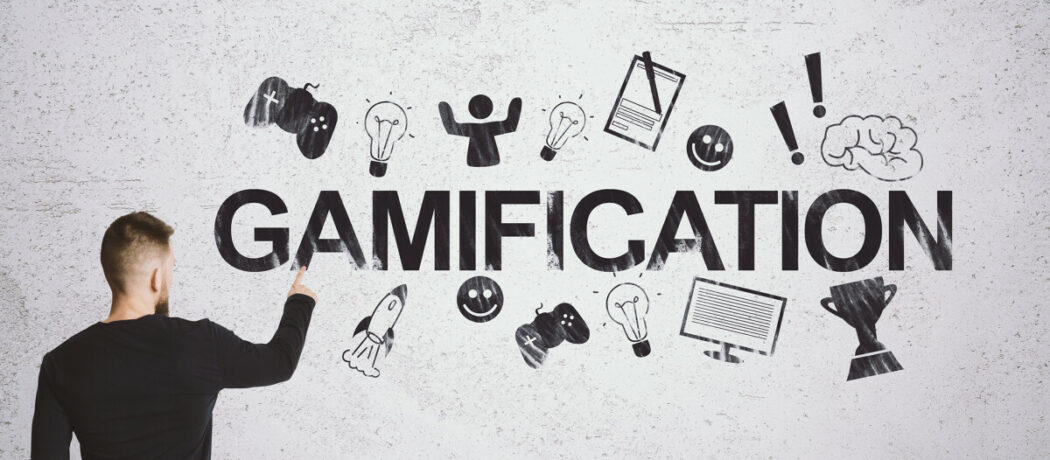Winning every time! How to reinforce the benefits of gamification

Share
Gamification – the use of elements from games – has captured the interest of numerous managers who are looking to energize or re-energize their teams’ routines. Drawing inspiration from video games to stimulate enthusiasm among consumers and employees alike, this strategy can transform repetitive tasks into entertaining experiences.
Salesforce (the American software company) for example, uses gamification to stimulate beneficial competition between salespeople with ranking and reward systems, while Spinify (a sales gamification platform) converts performance into real-time leaderboards, celebrating every success instantly. Corporate investment in gamification devices has been growing steadily in recent years, and P&S Market Research predicts that the market will reach over $70 billion by 2030. Like with many new products, these activities start out with a certain level of enthusiasm but in some cases this can quickly fall by the wayside. To ensure that the positive effects don’t fade too quickly, there are ways to revive its appeal.
Bringing the spirit of play into the workplace
Gamification devices are used in many sectors, such as sales, healthcare or online communities. In the corporate world, for example, these approaches aim to bring the spirit of play into employees’ day-to-day work, making responsibilities not only more enjoyable but also more rewarding, as we described in a previous article.
Meanwhile, sports-dedicated apps like Fitbit and Nike+ reward users with badges and challenges, enriching the physical experience. The Zombies, Run! Game offers an imaginative escape, pitting runners against zombies in captivating audio adventures. While gamification aims to develop long-term engagement, its success is not guaranteed, posing managers with the challenge of adjusting their strategy for optimal results.
Beware of the satiation effect
In our study published in the Journal of Service Research, we discovered that, while gamification initially captivates users, the appeal of gamified activities can fade quickly, sometimes leading to unexpected disengagement. This phenomenon, known as the “satiation effect”, reveals that the pleasure derived from enjoyable activities – listening to one’s favorite music, savoring a dish or immersing oneself in a video game – diminishes with repetition, faster than for other tasks, and can even become counter-productive. In this context, misuse of gamification can demotivate and disengage participants. Our research highlights three crucial strategies for sustaining the success of gamification.
Introducing spaces of time between gamification sessions can renew enthusiasm. The satiation effect, which often occurs after only two or three participations, can be mitigated by strategic “breaks”. Our research shows that a week’s delay between gamified activities fully rekindles user interest.
Giving time to the game
Although rarely used in today’s applications, this approach finds inspiration in mobile games such as FarmVille or Animal Crossing, where players are naturally encouraged to wait for crops to ripen or buildings to be completed. Clash of Clans adopts a similar tactic, renewing the resources to be allocated over time. This kind of process favors planning and regularity, but also helps to space out participation. While effective in maintaining engagement, this method can run into constraints, especially when continuous performance is crucial, as may be the case for salespeople or athletes.
Diversifying the gamification experience is essential for avoiding monotony. Managers are therefore encouraged to innovate by introducing different types of gamified activities, moving from individual challenges to team competitions, for example. This practice, already adopted in call centers, fosters a dynamic where both individual and team performance are valued.
To further enrich the experience, varying the rewards given to participants can also prove an effective strategy. Online platforms exploit this idea by offering possibilities for users to customize avatars, badges, trophies, stars or points, providing participants with new motivation with each session. Beyond the rewards, the performance indicators used to obtain them can also be varied.
Re-engaging the user
For example, we would recommend that sales team managers use the number of sales as a performance indicator in the gamification device, but also integrate other elements such as the number of steps taken during the day, or actions in favor of sustainable development. These latter alternatives are offered by applications such as VirginPulse and Ma-petite-planète. These strategic adjustments invite users to recommit, ensuring ongoing and renewed participation.
Organizations can also cultivate participants’ hopes of succeeding. Gamified activities draw their success from the challenging dynamic they create, captivating and motivating participants. As a study in Recherches et Applications en Marketing points out, this repetition creates a growing hope of victory for the user, compensating for any weariness. Highlighting participants’ progress and achievements, however minor they may seem, feeds their conviction that they’re on the brink of victory.
As a consequence, some companies have ensured that participants’ progress in their gamification programs is highlighted and promoted. Duolingo, for example, has mastered the art of stimulating this perception by stratifying progress through levels, experience points and learning sequences. Habitica reinvents daily routines as heroic quests, encouraging players to evolve through their avatar. Forest, meanwhile, focuses on concentration, transforming every moment of focus into an opportunity to hatch a virtual universe. These examples illustrate how gamification can transform the aspiration to win into an engine of continuous engagement.
In short, gamification can prove to be a captivating strategy, capable of metamorphosing routines into stimulating adventures, for employees and customers alike. Nevertheless, to ensure lasting commitment, managers need to be constantly creative: they need to space out the challenges, enrich the range of experiences, and cultivate the feeling of being on the brink of success. These approaches act as bulwarks against the wear and tear of novelty, paving the way for enriching and sustainable gamification.
Thomas Leclercq, Professor of Marketing, IESEG School of Management (LEM-CNRS 9221); Nadia Steils, HEC Liège, Université de Liège & Wafa Hammedi, Université de Namur
This is a translated version of an article published on The Conversation France.



